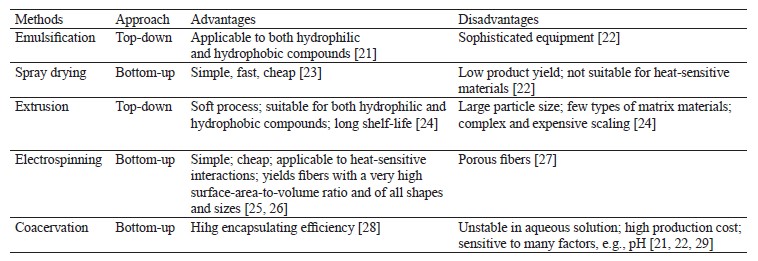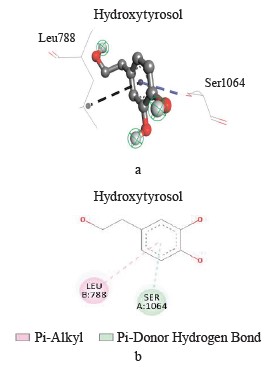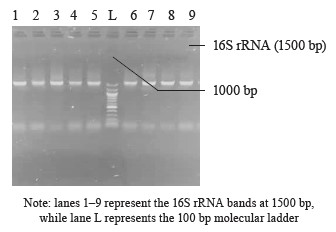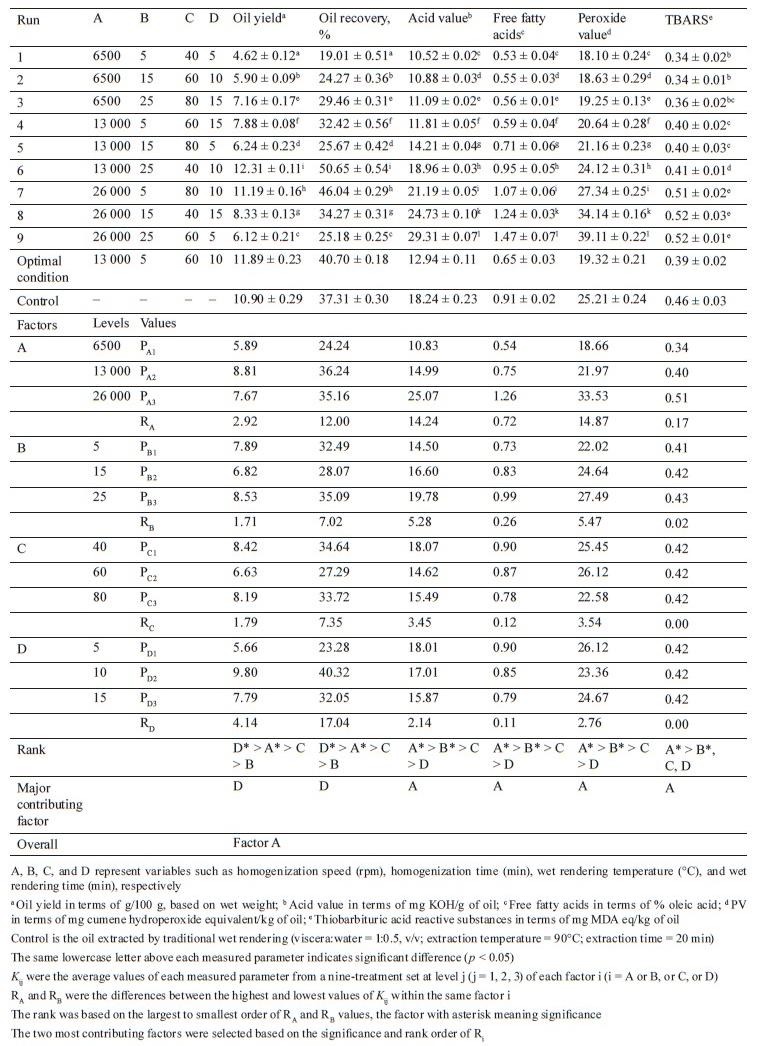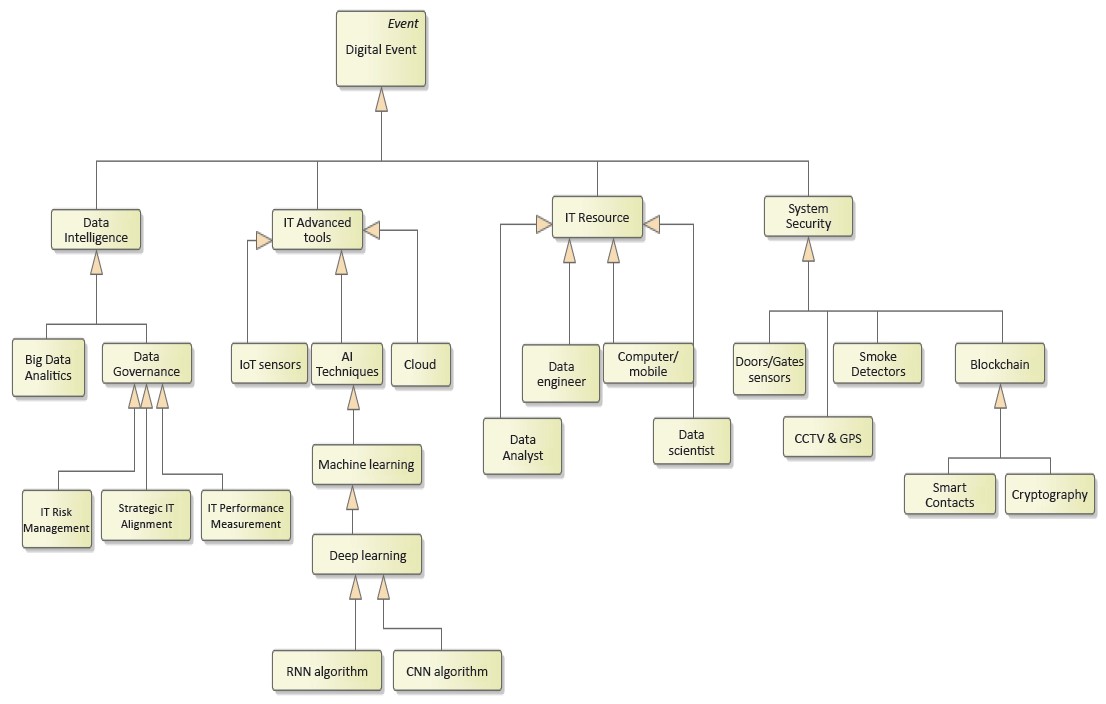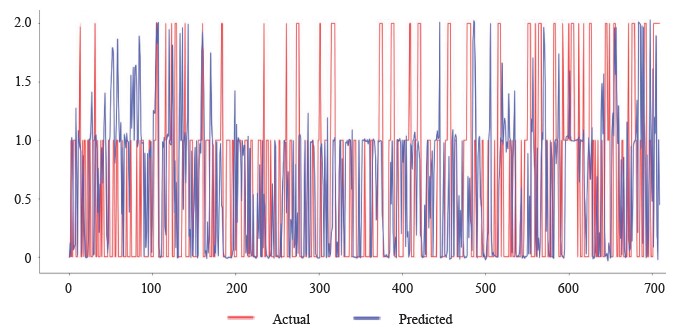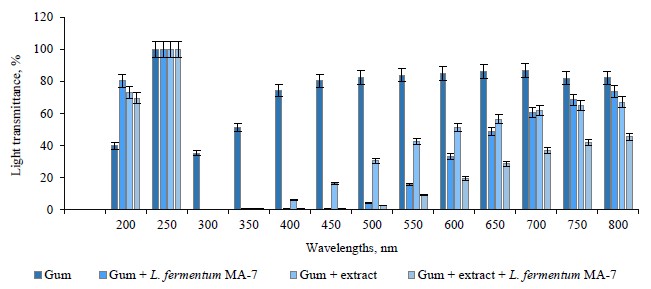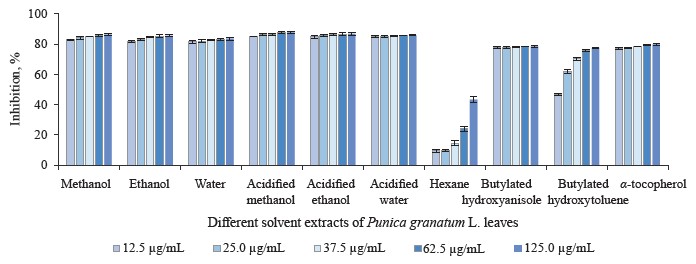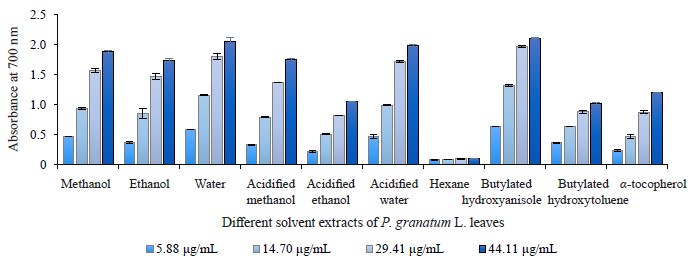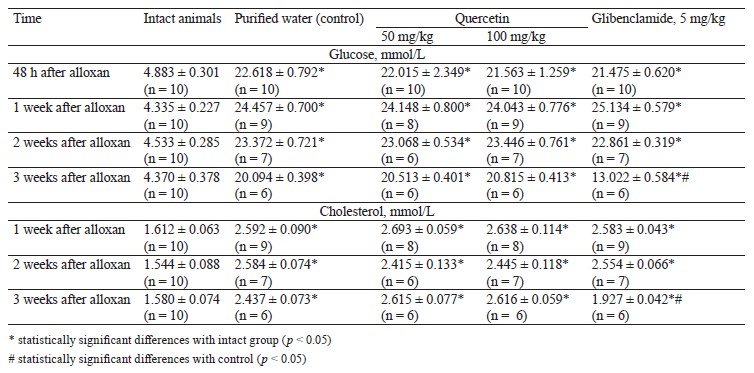Том 13, №1, 2025
3002
Аннотация
Neurodegenerative disorder leads to a progressive memory loss that has only limited known medications. The use of ashwagandha, probiotics, or their combination may improve cholinergic activity, consequently providing therapeutic potency against amnesia and neuroplasticity disorders. We aimed to explore the modulatory benefits of ashwagandha extract and probiotics against induced behavioral and neurochemical retardations.
Acid curd (Karish) cheese samples were supplemented with ashwagandha extract and/or probiotics and subjected to chemical, microbiological, rheological, sensorial, and biological investigations by standard techniques.
The supplementation of Karish cheese with ashwagandha never deteriorated its chemical composition or rheological parameters. On the contrary, it exerted high antioxidant and phenolic potentials. Also, ashwagandha extract performed antimicrobial action against the tested pathogenic bacteria and showed better prebiotic effects with Lactobacillus plantarum. The biological study revealed that treating dementia-modeled rats with Karish cheese supplemented with ashwagandha and/or probiotics resulted in a detectable improvement in the behavioral and neurochemical measurements. However, the cheese supplemented with a formula of ashwagandha and probiotics had the greatest regenerating effect.
The supplementation of Karish cheese with ashwagandha and/or probiotics exhibited a modulatory efficiency against experimentally induced behavioral and neurochemical disorders.
Acid curd (Karish) cheese samples were supplemented with ashwagandha extract and/or probiotics and subjected to chemical, microbiological, rheological, sensorial, and biological investigations by standard techniques.
The supplementation of Karish cheese with ashwagandha never deteriorated its chemical composition or rheological parameters. On the contrary, it exerted high antioxidant and phenolic potentials. Also, ashwagandha extract performed antimicrobial action against the tested pathogenic bacteria and showed better prebiotic effects with Lactobacillus plantarum. The biological study revealed that treating dementia-modeled rats with Karish cheese supplemented with ashwagandha and/or probiotics resulted in a detectable improvement in the behavioral and neurochemical measurements. However, the cheese supplemented with a formula of ashwagandha and probiotics had the greatest regenerating effect.
The supplementation of Karish cheese with ashwagandha and/or probiotics exhibited a modulatory efficiency against experimentally induced behavioral and neurochemical disorders.
3420
Аннотация
Таблицы и рисунки
Polyphenols are present as nutrient components in many functional food formulations. However, their bioavailability is quite low, and they tend to degrade under extreme technological conditions, e.g., heating, pH, etc. Moreover, polyphenols are known for their specific bitter taste. As a result, a large amount of polyphenols spoils the sensory properties of the finished product. Encapsulation seems a prospective solution to this problem. This article provides a comprehensive review of scientific publications on various methods of polyphenol encapsulation.
The review covered publications registered in PubMed, Google Scholar, ResearchGate, Elsevier, eLIBRARY.RU, and Cyberleninka in 2002–2023 with a focus on original research articles published after 2012. The search involved such keywords as polyphenols, encapsulation, flavonoids, delivery systems, and functional products.
Encapsulating materials are made of organic or inorganic substances, as well as of their combinations. Mineral salts delay the contact between polyphenols and taste buds. However, they are not resistant enough to gastric juice. In this respect, organic matrices are more effective. Carbohydrates protect active molecules from degradation in the stomach. Liposomes increase the bioavailability of polyphenols. Milk or whey proteins also proved quite effective for a number of reasons. First, they mask the astringent taste, which makes it possible to include more polyphenols in functional food formulations. Second, the resulting product is fortified with valuable proteins and essential amino acids. Third, high concentrations of polyphenols possess enough antioxidant properties to increase the shelf-life.
Polyphenol encapsulation is an effective method of functional product design, especially in the sphere of foods made for dietary nutrition, sports, preventive diets, etc.
The review covered publications registered in PubMed, Google Scholar, ResearchGate, Elsevier, eLIBRARY.RU, and Cyberleninka in 2002–2023 with a focus on original research articles published after 2012. The search involved such keywords as polyphenols, encapsulation, flavonoids, delivery systems, and functional products.
Encapsulating materials are made of organic or inorganic substances, as well as of their combinations. Mineral salts delay the contact between polyphenols and taste buds. However, they are not resistant enough to gastric juice. In this respect, organic matrices are more effective. Carbohydrates protect active molecules from degradation in the stomach. Liposomes increase the bioavailability of polyphenols. Milk or whey proteins also proved quite effective for a number of reasons. First, they mask the astringent taste, which makes it possible to include more polyphenols in functional food formulations. Second, the resulting product is fortified with valuable proteins and essential amino acids. Third, high concentrations of polyphenols possess enough antioxidant properties to increase the shelf-life.
Polyphenol encapsulation is an effective method of functional product design, especially in the sphere of foods made for dietary nutrition, sports, preventive diets, etc.
2667
Аннотация
Таблицы и рисунки
Hyperlipidemia is an enduring metabolic ailment that affects glucose and lipid processing.
The research objective was to measure the total phenolic, flavonoid, and tannin contents in Olea europaea L. leaves and to to identify their antioxidant and antihyperlipidemic potential. The study included an in silico model of interaction for hydroxytyrosol, oleuropein, and xanthine dehydrogenase. The in vivo experiment involved rabbits that received olive leaves (150 mg/kg) and 10 mL of egg yolk as a high-fat diet. At the end of the experimental period, blood samples were tested for lipid profile, and tissue specimens were used for liver histology.
The total phenolic content was 119.84 ± 3.86 mg GAE/g, the total flavonoid content was 2.22 ± 0.07 mg CE/g, and the total tannin content was 21.25 ± 1.24 mg REQ/g dry weight. According to DPPH and FRAP analyses, the antioxidant capacities were 0.34 ± 0.06 μg/mL and 6.35 ± 0.52 μmol Fe(II)/g dry weight, respectively. In the experimental animals, O. europaea leaves reduced such parameters as total cholesterol, low-density lipoprotein, total triglycerides, total cholesterol vs. high-density lipoprotein, and low-density lipoprotein vs. high-density lipoprotein. The histopathological liver assay showed no signs of tissue damage while the samples obtained from the control group demonstrated steatosis deposits and cellular necrosis. Based on the energy and RMSD results, hydroxytyrosol proved an effective xanthine dehydrogenase inhibition.
These findings constitute a good scientific basis for the complementary future research on the potential of O. europaea leaves as ingredients of functional foods or medical drugs.
The research objective was to measure the total phenolic, flavonoid, and tannin contents in Olea europaea L. leaves and to to identify their antioxidant and antihyperlipidemic potential. The study included an in silico model of interaction for hydroxytyrosol, oleuropein, and xanthine dehydrogenase. The in vivo experiment involved rabbits that received olive leaves (150 mg/kg) and 10 mL of egg yolk as a high-fat diet. At the end of the experimental period, blood samples were tested for lipid profile, and tissue specimens were used for liver histology.
The total phenolic content was 119.84 ± 3.86 mg GAE/g, the total flavonoid content was 2.22 ± 0.07 mg CE/g, and the total tannin content was 21.25 ± 1.24 mg REQ/g dry weight. According to DPPH and FRAP analyses, the antioxidant capacities were 0.34 ± 0.06 μg/mL and 6.35 ± 0.52 μmol Fe(II)/g dry weight, respectively. In the experimental animals, O. europaea leaves reduced such parameters as total cholesterol, low-density lipoprotein, total triglycerides, total cholesterol vs. high-density lipoprotein, and low-density lipoprotein vs. high-density lipoprotein. The histopathological liver assay showed no signs of tissue damage while the samples obtained from the control group demonstrated steatosis deposits and cellular necrosis. Based on the energy and RMSD results, hydroxytyrosol proved an effective xanthine dehydrogenase inhibition.
These findings constitute a good scientific basis for the complementary future research on the potential of O. europaea leaves as ingredients of functional foods or medical drugs.
2928
Аннотация
Таблицы и рисунки
Ashwagandha (Withania somnifera L. Dunal) is an Ayurvedic medicinal herb that has been known for its therapeutic properties for millennia. Ashwagandha contains several bioactive compounds, including withanolides, alkaloids, and saponins. They make ashwagandha a potent adaptogen and a versatile herb that can maintain optimal health and overall well-being. Ashwagandha reduces stress and anxiety, as well as boosts the immune system. Its anti-inflammatory properties treat arthritis, asthma, diabetes, and inflammatory bowel disease.
Ashwagandha produces an immunomodulatory effect on natural killer cells, lymphocytes, and leukemia cells. It enhances the activity of natural killer cells, increases lymphocyte function, and induces apoptosis in leukemia cells. However, its mechanism of action still remains understudied.
Ashwagandha has an impact on COVID-19: phytochemical withanone blocks or weakens the interaction between S-protein and Angiotensin-converting enzyme 2. Withanoside V and somniferine inhibit viral transcription and replication caused by SARSCoV-2 Mpro.
This review explores the potential utilization of ashwagandha in the food industry, i.e., its safety and toxicity, as well as the mechanism behind its immunomodulatory effect.
Ashwagandha produces an immunomodulatory effect on natural killer cells, lymphocytes, and leukemia cells. It enhances the activity of natural killer cells, increases lymphocyte function, and induces apoptosis in leukemia cells. However, its mechanism of action still remains understudied.
Ashwagandha has an impact on COVID-19: phytochemical withanone blocks or weakens the interaction between S-protein and Angiotensin-converting enzyme 2. Withanoside V and somniferine inhibit viral transcription and replication caused by SARSCoV-2 Mpro.
This review explores the potential utilization of ashwagandha in the food industry, i.e., its safety and toxicity, as well as the mechanism behind its immunomodulatory effect.
2164
Аннотация
Таблицы и рисунки
Synthesized in plants, polyphenols are powerful antioxidants and protect against stressful conditions. We aimed to identify different kinds of phytochemicals in fruits and provide detailed information on the roles they play in promoting good health in the human body. We also discussed the biological activities of phytochemicals found in several fruits.
Google Scholar and PubMed databases were used to search for relevant information that could assist in answering our research questions. We selected and reviewed both research and review articles related to the purpose of our study.
Fruits contain numerous antioxidants which neutralize the negative impact of free radicals on the body. Free radicals are destructive species that can be produced during normal body metabolism or come from exogenous sources such as smoking or exposure to radiation. Due to their unstable nature, they can cause damage to cellular macromolecules, resulting in the development of degenerative diseases. Phytochemicals are diverse groups of bioactive compounds found in fruits that have potent antioxidant activity and exhibit several health-promoting properties in both in vivo and in vitro studies. There are two major groups of antioxidants: natural (or dietary) antioxidants and synthetic antioxidants. Natural antioxidants have gained much popularity in recent times because of the safety concerns surrounding the use of synthetic antioxidants.
The consumption of fruits plays a critical role in disease prevention, especially diseases resulting from oxidative damage to cells. The inclusion of fruits in one’s daily diet helps improve their overall wellbeing.
Google Scholar and PubMed databases were used to search for relevant information that could assist in answering our research questions. We selected and reviewed both research and review articles related to the purpose of our study.
Fruits contain numerous antioxidants which neutralize the negative impact of free radicals on the body. Free radicals are destructive species that can be produced during normal body metabolism or come from exogenous sources such as smoking or exposure to radiation. Due to their unstable nature, they can cause damage to cellular macromolecules, resulting in the development of degenerative diseases. Phytochemicals are diverse groups of bioactive compounds found in fruits that have potent antioxidant activity and exhibit several health-promoting properties in both in vivo and in vitro studies. There are two major groups of antioxidants: natural (or dietary) antioxidants and synthetic antioxidants. Natural antioxidants have gained much popularity in recent times because of the safety concerns surrounding the use of synthetic antioxidants.
The consumption of fruits plays a critical role in disease prevention, especially diseases resulting from oxidative damage to cells. The inclusion of fruits in one’s daily diet helps improve their overall wellbeing.
2486
Аннотация
Таблицы и рисунки
Coacervation is a low-energy method that is ideal for encapsulating heat-sensitive materials, e.g., limonene, citral, linalool, and isoamyl acetate.
This research used a simple coacervation method to prepare flavoring beads with alginate and Tween 80. The methods of scanning electron microscopy (SEM) and fourier transform infrared (FTIR) spectroscopy made it possible to study the morphology and structure of the flavoring beads. After the extraction, the flavor retention and structure were described using the method of gas chromatography with mass spectrometry (GC-MS).
The microcapsules demonstrated a retention rate of 99.07–99.73% while the encapsulation efficiency remained as high as 96.40–97.07%. The microcapsules had a mononuclear structure and ranged from spherical to elongated ellipsoids; they were sealed without agglomeration. The particle size was below 1000 µm. The GC-MS chromatograms detected neither structural changes nor any new compounds. The FTIR spectra were similar to the control but demonstrated slight shifts, which suggested fundamental structural changes caused by the coacervation. We also fortified sponge cake and jelly with flavoring beads. The sensory analysis of the sponge cake samples revealed no significant differences compared to the control. All the fortified jelly samples had higher scores for smell, taste, texture, and overall preference than the control.
The coacervation method proved to be an excellent solution for the problem of heat-sensitive flavorings that often lose quality or sensory attributes in food products that undergo extensive thermal treatment.
This research used a simple coacervation method to prepare flavoring beads with alginate and Tween 80. The methods of scanning electron microscopy (SEM) and fourier transform infrared (FTIR) spectroscopy made it possible to study the morphology and structure of the flavoring beads. After the extraction, the flavor retention and structure were described using the method of gas chromatography with mass spectrometry (GC-MS).
The microcapsules demonstrated a retention rate of 99.07–99.73% while the encapsulation efficiency remained as high as 96.40–97.07%. The microcapsules had a mononuclear structure and ranged from spherical to elongated ellipsoids; they were sealed without agglomeration. The particle size was below 1000 µm. The GC-MS chromatograms detected neither structural changes nor any new compounds. The FTIR spectra were similar to the control but demonstrated slight shifts, which suggested fundamental structural changes caused by the coacervation. We also fortified sponge cake and jelly with flavoring beads. The sensory analysis of the sponge cake samples revealed no significant differences compared to the control. All the fortified jelly samples had higher scores for smell, taste, texture, and overall preference than the control.
The coacervation method proved to be an excellent solution for the problem of heat-sensitive flavorings that often lose quality or sensory attributes in food products that undergo extensive thermal treatment.
2241
Аннотация
Таблицы и рисунки
Phylogenetic information on microbial communities involved in fermenting botanicals has important implications for the food industry since it can provide a valuable perspective on the diversity, composition, and techno-functional properties and characteristics of the final product. Microbial phylogenetic analysis illustrates the evolutionary history of microbes through visual representational graphs (phylogenetic trees) showing the beginning and advancement of their assemblage.
In this study, we used molecular methods to determine the phylogenetic identities of microbes occurring in spontaneously fermented sweet potato, maize, and pigeon pea samples after a 72-hourly evaluation every 12 h. The sequences obtained were edited using the bioinformatics algorithm against similar sequences downloaded from the National Center for Biotechnology Information (NCBI) database using BLASTN and aligned using ClustalX. The neighbor-joining technique was applied to extrapolate the chronicle of the isolates evolution.
Molecular identification from the BLASTN results showed the following bacterial isolates: Lysinibacillus macrolides, Klebsiella pneumoniae, Lactococcus lactis, Providencia stuartii, Enterobacter cloacae, Limosilactobacillus fermentum, Lactobacillus fermentum, Staphylococcus edaphicus, and Bacillus flexus, as well as the following fungal isolates: Trichosporon asahii, Mucor irregularis, Cladosporium tenuissimum, and Aspergillus niger. The sequences obtained from the isolates produced an exact match with the NCBI non-redundant nucleotide (nr/nt) database. L. lactis had the highest percentage occurrence for bacteria (38.46%), while T. asahii and A. niger showed the highest occurrence for fungi (37.50%).
Identifying and characterizing the microorganisms involved in the fermentation process would allow optimizing fermentation conditions to enhance the quality and nutritional value of the final products.
In this study, we used molecular methods to determine the phylogenetic identities of microbes occurring in spontaneously fermented sweet potato, maize, and pigeon pea samples after a 72-hourly evaluation every 12 h. The sequences obtained were edited using the bioinformatics algorithm against similar sequences downloaded from the National Center for Biotechnology Information (NCBI) database using BLASTN and aligned using ClustalX. The neighbor-joining technique was applied to extrapolate the chronicle of the isolates evolution.
Molecular identification from the BLASTN results showed the following bacterial isolates: Lysinibacillus macrolides, Klebsiella pneumoniae, Lactococcus lactis, Providencia stuartii, Enterobacter cloacae, Limosilactobacillus fermentum, Lactobacillus fermentum, Staphylococcus edaphicus, and Bacillus flexus, as well as the following fungal isolates: Trichosporon asahii, Mucor irregularis, Cladosporium tenuissimum, and Aspergillus niger. The sequences obtained from the isolates produced an exact match with the NCBI non-redundant nucleotide (nr/nt) database. L. lactis had the highest percentage occurrence for bacteria (38.46%), while T. asahii and A. niger showed the highest occurrence for fungi (37.50%).
Identifying and characterizing the microorganisms involved in the fermentation process would allow optimizing fermentation conditions to enhance the quality and nutritional value of the final products.
3917
Аннотация
Таблицы и рисунки
Traditional wet rendering leads to the degradation of polyunsaturated fatty acids in fish oil. Therefore, we combined this method with high-shear homogenization and high-frequency ultrasound to extract oil from Clarias magur visceral biomass. This way, we aimed to achieve higher oil yield, shorter extraction times, and a better preservation of polyunsaturated fatty acids.
High-shear homogenization and high-frequency ultrasound increased the oil yields by 9.17 and 10.55%, respectively, compared to traditional wet rendering. The oil quality was also improved, with lower acid and peroxide values. Scanning electron microscopy confirmed enhanced cell disruption for increasing the oil extraction efficiency. Fourier transfer infrared spectroscopy also proved the efficacy of homogenization and ultrasound pretreatment in enhancing the extraction of polyunsaturated fatty acids from C. magur visceral biomass. Their content showed a significant variation among different extraction methods. Specifically, the high-frequency ultrasound method resulted in a notable 15.1% increase, while the high-shear homogenization method demonstrated a significant 13.3% increase, compared to the wet rendering method (control). The oil extracted by the high-frequency ultrasound method demonstrated a 7.5% increase in eicosatetraenoic acid and a 11.7% increase in docosahexaenoic acid, as compared to the oil obtained from the control method. High-shear homogenization and high-frequency ultrasound shortened the extraction time and reduced the temperature requirements for oil extraction from wet biomass.
These techniques have potential for efficient fish oil extraction, valuable in the healthcare and food industries.
High-shear homogenization and high-frequency ultrasound increased the oil yields by 9.17 and 10.55%, respectively, compared to traditional wet rendering. The oil quality was also improved, with lower acid and peroxide values. Scanning electron microscopy confirmed enhanced cell disruption for increasing the oil extraction efficiency. Fourier transfer infrared spectroscopy also proved the efficacy of homogenization and ultrasound pretreatment in enhancing the extraction of polyunsaturated fatty acids from C. magur visceral biomass. Their content showed a significant variation among different extraction methods. Specifically, the high-frequency ultrasound method resulted in a notable 15.1% increase, while the high-shear homogenization method demonstrated a significant 13.3% increase, compared to the wet rendering method (control). The oil extracted by the high-frequency ultrasound method demonstrated a 7.5% increase in eicosatetraenoic acid and a 11.7% increase in docosahexaenoic acid, as compared to the oil obtained from the control method. High-shear homogenization and high-frequency ultrasound shortened the extraction time and reduced the temperature requirements for oil extraction from wet biomass.
These techniques have potential for efficient fish oil extraction, valuable in the healthcare and food industries.
3282
Аннотация
Таблицы и рисунки
Agriculture 4.0 is an opportunity for farmers to meet the current challenges in food production. It has become necessary to adopt a set of agricultural practices based on advanced technologies. Agriculture 4.0 enables farms to create added value by combining innovative technologies, such as precision agriculture, information and communication technology, robotics, and Big Data.
As an enterprise, a connected farm is highly sensitive to strategic changes in organizational structures, objectives, modified variety, new business objects, processes, etc. To control the farm’s information system strategically, we proposed a metamodel based on the ISO/IS 19440 standard, where we added some new constructs relating to advanced digital technologies for smart and connected agriculture.
We applied the proposed metamodel to the crop classification prediction process. This involved using machine learning methods such as recurrent neural networks to predict the type of crop being grown in a given agricultural area.
Our research bridges farming with modern technology through our metamodel for a connected farm, promoting sustainability and efficiency. Furthermore, our crop classification study demonstrates the power of advanced machine learning, guided by our metamodel, in accurately predicting crop conditions, emphasizing its potential for crop management and food security. In essence, our work advances the transformative role of digital agriculture in modern farming.
As an enterprise, a connected farm is highly sensitive to strategic changes in organizational structures, objectives, modified variety, new business objects, processes, etc. To control the farm’s information system strategically, we proposed a metamodel based on the ISO/IS 19440 standard, where we added some new constructs relating to advanced digital technologies for smart and connected agriculture.
We applied the proposed metamodel to the crop classification prediction process. This involved using machine learning methods such as recurrent neural networks to predict the type of crop being grown in a given agricultural area.
Our research bridges farming with modern technology through our metamodel for a connected farm, promoting sustainability and efficiency. Furthermore, our crop classification study demonstrates the power of advanced machine learning, guided by our metamodel, in accurately predicting crop conditions, emphasizing its potential for crop management and food security. In essence, our work advances the transformative role of digital agriculture in modern farming.
2930
Аннотация
Таблицы и рисунки
Metastable electrochemically-activated water solutions possess unique properties that make it possible to modify food emulsions. This comparative analysis featured the stability of model oil-in-water emulsions with anolyte or catholyte as a dispersion medium, as well as the physical and morphometric profile of the emulsion system.
The research involved emulsions based on anolyte and catholyte. They consisted of refined sunflower oil, emulsifier (lecithin), and stabilizers, which were represented by sodium alginate, sodium carboxymethylcellulose, pectins, and agar. The study also covered such parameters as aggregative stability, viscosity, morphometry, oil particle size, and zeta potential.
Anolyte and catholyte affected the process of separation in the model emulsions. The samples stabilized with alginate and sodium carboxymethylcellulose proved to be the most stable emulsions while agar triggered gelation. The effect of substituting tap water with metastable electrolyzed water solutions depended on the oil proportion in the emulsion. Catholyte destabilized the samples with 20% of oil and liquified gel in the samples stabilized with agar. Anolyte was more aggressive in destabilizing emulsions with 30% of oil. The effective viscosity of these emulsions correlated with the stable phase fraction. The anolytebased samples had low effective viscosity. The opposite results for emulsions with different oil fractions may have been caused by interface changes, i.e., surface tension, adsorption, coalescence, etc. In the emulsions with 46% of oil and animal origin emulsifier, neither anolyte nor catholyte had any significant effect on the aggregative stability of the system.
The revealed patterns can be used to control the properties of emulsion products with oil phase ≤ 30%, e.g., low-fat mayonnaises, sauces, emulsion drinks, etc. Metastable electrolyzed water solutions may provide a reagent-free control of properties and patterns of finished or semi-finished foods and biological raw materials.
The research involved emulsions based on anolyte and catholyte. They consisted of refined sunflower oil, emulsifier (lecithin), and stabilizers, which were represented by sodium alginate, sodium carboxymethylcellulose, pectins, and agar. The study also covered such parameters as aggregative stability, viscosity, morphometry, oil particle size, and zeta potential.
Anolyte and catholyte affected the process of separation in the model emulsions. The samples stabilized with alginate and sodium carboxymethylcellulose proved to be the most stable emulsions while agar triggered gelation. The effect of substituting tap water with metastable electrolyzed water solutions depended on the oil proportion in the emulsion. Catholyte destabilized the samples with 20% of oil and liquified gel in the samples stabilized with agar. Anolyte was more aggressive in destabilizing emulsions with 30% of oil. The effective viscosity of these emulsions correlated with the stable phase fraction. The anolytebased samples had low effective viscosity. The opposite results for emulsions with different oil fractions may have been caused by interface changes, i.e., surface tension, adsorption, coalescence, etc. In the emulsions with 46% of oil and animal origin emulsifier, neither anolyte nor catholyte had any significant effect on the aggregative stability of the system.
The revealed patterns can be used to control the properties of emulsion products with oil phase ≤ 30%, e.g., low-fat mayonnaises, sauces, emulsion drinks, etc. Metastable electrolyzed water solutions may provide a reagent-free control of properties and patterns of finished or semi-finished foods and biological raw materials.
2511
Аннотация
Таблицы и рисунки
Sclerocarya birrea (A. Rich.) Hochst. is an African wild tree found in many countries across the continent. Its leaves, bark, root, and fruits are used in food, cosmetics, and traditional medicine. However, no systematic bibliometric review on S. birrea have been performed so far.
This study covered publications made in 1986–2022 and investigated such bibliometric indicators as knowledge dynamics, links and structure, relevant journals, productive organizations, renowned authors, authoring patterns, national and international collaboration levels, etc. The bibliometric data on a total of 369 publications were downloaded from Scopus database and analyzed using the MS-Excel and VOSViewer software.
The Scopus publications on S. birrea showed a versatile range in the interdisciplinary areas of research, with agricultural and biological sciences predominating. The Republic of South Africa was responsible for the largest number of citations. All in all, 63 countries published research on S. birrea in the specified time period, and the share of African countries was 65.43% of the total global research. Co-authorship and international collaboration were registered for six clusters. A total of 1114 researchers and 160 institutions actively contributed to S. birrea studies, with 37 having a minimum of five publications. Mapping of knowledge structure using the keyword co-occurrence revealed the related research areas. The Journal of Ethnopharmacology took the lead in terms of average citation.
The co-citation analysis revealed some remarkable dynamics in S. birrea research. This bibliometric study provides a complete insight into S. birrea research development and publication patterns over the last 36 years.
This study covered publications made in 1986–2022 and investigated such bibliometric indicators as knowledge dynamics, links and structure, relevant journals, productive organizations, renowned authors, authoring patterns, national and international collaboration levels, etc. The bibliometric data on a total of 369 publications were downloaded from Scopus database and analyzed using the MS-Excel and VOSViewer software.
The Scopus publications on S. birrea showed a versatile range in the interdisciplinary areas of research, with agricultural and biological sciences predominating. The Republic of South Africa was responsible for the largest number of citations. All in all, 63 countries published research on S. birrea in the specified time period, and the share of African countries was 65.43% of the total global research. Co-authorship and international collaboration were registered for six clusters. A total of 1114 researchers and 160 institutions actively contributed to S. birrea studies, with 37 having a minimum of five publications. Mapping of knowledge structure using the keyword co-occurrence revealed the related research areas. The Journal of Ethnopharmacology took the lead in terms of average citation.
The co-citation analysis revealed some remarkable dynamics in S. birrea research. This bibliometric study provides a complete insight into S. birrea research development and publication patterns over the last 36 years.
1771
Аннотация
Таблицы и рисунки
Preventing food spoilage and prolonging its shelf life are of great importance to meet the increasing food demand. Dietary fibers in red pitahaya are known to help maintain food freshness. Lactic acid bacteria have probiotic properties and can be a good alternative to additives in food production. Therefore, we aimed to investigate the potential use of gum-based edible films containing red pitahaya extract and probiotic as a coating material in the food industry.
Firstly, we determined the antimicrobial activity of red pitahaya peel and flesh extracts against pathogenic microorganisms and probiotic strains. Then, we employed the well diffusion method to determine the antimicrobial activity of the edible films containing red pitahaya extracts and Limosilactobacillus fermentum MA-7 used as a probiotic strain.
The largest inhibition zone diameters of peel and flesh extracts were 12.97 and 13.32 mm, respectively, against Candida albicans ATCC 10231. The inhibition of the growth of lactic acid bacteria was lower as the extract concentration decreased. The gum-based films with flesh extract and probiotic had the largest inhibition zone diameters of 21.63 and 21.52 mm, respectively, against Aeromonas hydrophila ATCC19570 and C. albicans ATCC 10231.
The edible films containing red pitahaya extract and L. fermentum MA-7 may have the potential to prevent spoilage caused by microorganisms in the food industry and to extend the shelf life of foods.
Firstly, we determined the antimicrobial activity of red pitahaya peel and flesh extracts against pathogenic microorganisms and probiotic strains. Then, we employed the well diffusion method to determine the antimicrobial activity of the edible films containing red pitahaya extracts and Limosilactobacillus fermentum MA-7 used as a probiotic strain.
The largest inhibition zone diameters of peel and flesh extracts were 12.97 and 13.32 mm, respectively, against Candida albicans ATCC 10231. The inhibition of the growth of lactic acid bacteria was lower as the extract concentration decreased. The gum-based films with flesh extract and probiotic had the largest inhibition zone diameters of 21.63 and 21.52 mm, respectively, against Aeromonas hydrophila ATCC19570 and C. albicans ATCC 10231.
The edible films containing red pitahaya extract and L. fermentum MA-7 may have the potential to prevent spoilage caused by microorganisms in the food industry and to extend the shelf life of foods.
2350
Аннотация
Таблицы и рисунки
Punica granatum L. possesses significant nutritional and medicinal potential. Its pharmacological activities have been investigated, but no comparative evaluation has been reported regarding the effect of different extraction solvents on the phytochemical content and antioxidant activity of its leaf, bud, and flower extracts.
This research involved seven various solvents, namely methanol, ethanol, water, acidified methanol, acidified ethanol, acidified water, and hexane. A set of experiments made it possible to define the effect of each of these solvents on the contents of phenolics, flavonoids, flavanols, flavonols, anthocyanins, and tannins, as well as on the antioxidant activity of pomegranate leaf, bud and flower tissues. The research objective was to identify the optimal solvent for the most effective extraction of the abovementioned functional compounds. The antioxidant activity tests involved DPPH free radical scavenging, metal chelating, iron (III) reducing power, and CUPRAC assays.
The aqueous extract of P. granatum leaves demonstrated the highest total phenolic content (192.57 mg GAE/g extract) while the greatest flavonoid content belonged to the acidified methanol extract of P. granatum buds (73.93 mg RE/g extract). The HPLC analysis detected such significant phenolic compounds as punicalagin in buds and flowers, as well as gallic acid in leaves. All the extracts showed good antioxidant activity; however, the bud extracts had a better antioxidant profile than the extracts from leaves and flowers.
The pomegranate leaf, bud, and flower extracts demonstrated excellent phytochemical and antioxidant properties, which makes it possible to recommend these plant tissues as raw materials to be used in pharmaceutical, food, nutraceutical, and cosmetic industries.
This research involved seven various solvents, namely methanol, ethanol, water, acidified methanol, acidified ethanol, acidified water, and hexane. A set of experiments made it possible to define the effect of each of these solvents on the contents of phenolics, flavonoids, flavanols, flavonols, anthocyanins, and tannins, as well as on the antioxidant activity of pomegranate leaf, bud and flower tissues. The research objective was to identify the optimal solvent for the most effective extraction of the abovementioned functional compounds. The antioxidant activity tests involved DPPH free radical scavenging, metal chelating, iron (III) reducing power, and CUPRAC assays.
The aqueous extract of P. granatum leaves demonstrated the highest total phenolic content (192.57 mg GAE/g extract) while the greatest flavonoid content belonged to the acidified methanol extract of P. granatum buds (73.93 mg RE/g extract). The HPLC analysis detected such significant phenolic compounds as punicalagin in buds and flowers, as well as gallic acid in leaves. All the extracts showed good antioxidant activity; however, the bud extracts had a better antioxidant profile than the extracts from leaves and flowers.
The pomegranate leaf, bud, and flower extracts demonstrated excellent phytochemical and antioxidant properties, which makes it possible to recommend these plant tissues as raw materials to be used in pharmaceutical, food, nutraceutical, and cosmetic industries.
1829
Аннотация
Таблицы и рисунки
Oral non-tobacco nicotine products have gained enormous popularity in recent years. The countries of the Eurasian Economic Union also produce and sell this type of innovative but poorly studied goods. As a result, the safety profile and quality of such products as nicotine poaches require urgent comprehensive research. This study featured the changes in quality of nicotine poaches during storage, i.e. nicotine content, water activity, and microbiological index.
The research featured nicotine poaches of several popular brands. The authors used standard research methods; the experiments were performed in the laboratory for chemistry and quality control, Institute of Tobacco, Makhorka, and Tobacco Products, Krasnodar, and at the Department of Bioorganic Chemistry and Technical Microbiology, Kuban State Technological University, Krasnodar.
The water activity was 0.8911–0.9502 Aw at the initial stage and remained stable in most samples even after six months of storage. Velo Freeze was the only brand to show significant variations in water activity. The nicotine content was 10.115–12.950 mg/g at the initial stage. Only four samples maintained the initial values after six months of storage. The fluctuations of nicotine content were also mentioned by the manufacturer. The microbiological profile remained stable during the six months of storage and met the requirements for similar products, i.e., chewing gum and unglazed caramel.
The project needs further research because the qualitative characteristics of nicotine poaches provided rather unambiguous results. Our study will help develop state standards for oral nicotine products. The results obtained will be used to formulate proposals to the organizations responsible for the future Technical Regulations of the Eurasian Economic Union for nicotine products.
The research featured nicotine poaches of several popular brands. The authors used standard research methods; the experiments were performed in the laboratory for chemistry and quality control, Institute of Tobacco, Makhorka, and Tobacco Products, Krasnodar, and at the Department of Bioorganic Chemistry and Technical Microbiology, Kuban State Technological University, Krasnodar.
The water activity was 0.8911–0.9502 Aw at the initial stage and remained stable in most samples even after six months of storage. Velo Freeze was the only brand to show significant variations in water activity. The nicotine content was 10.115–12.950 mg/g at the initial stage. Only four samples maintained the initial values after six months of storage. The fluctuations of nicotine content were also mentioned by the manufacturer. The microbiological profile remained stable during the six months of storage and met the requirements for similar products, i.e., chewing gum and unglazed caramel.
The project needs further research because the qualitative characteristics of nicotine poaches provided rather unambiguous results. Our study will help develop state standards for oral nicotine products. The results obtained will be used to formulate proposals to the organizations responsible for the future Technical Regulations of the Eurasian Economic Union for nicotine products.
1916
Аннотация
Таблицы и рисунки
Reproduction is key to the survival and development of a species. Anthropogenic activities release significant amounts of toxic pollutants into the environment. In this study, we aimed to determine effects of heavy metals on some reproductive parameters of the mountain hare.
Female mountain hares (n = 41) were hunted in the reference and industrially polluted areas of Krasnoyarsk Krai during four seasons. Their skeletal muscles, liver, and kidneys were subjected to atomic absorption spectrometry to determine concentrations of lead, cadmium, and mercury.
The contents of lead, cadmium, and mercury were significantly higher in the hares from the contaminated areas compared to the reference sites. According to the results, the exposure to lead, cadmium, and mercury had an impact on the reproductive potential of the female mountain hares. In particular, we established correlations between numbers of embryos and corpora lutea and contents of lead in the kidneys and liver, as well as cadmium in the kidneys. The number of corpora lutea and embryonic losses in the female hares from the contaminated areas were higher than those in the hared from reference areas. However, the numbers of embryos did not differ significantly between the compared areas.
Our study showed that about 40% of the liver samples and 100% of the muscle tissue samples obtained from the hares in the impact zone contained high concentrations of lead and cadmium. Therefore, hunting in these industrially polluted areas may pose a toxic hazard to the indigenous peoples living there. Further research is needed to assess potential and actual fertility, offspring survival, and other important parameters of mountain hare populations exposed to different levels of chemical pollution.
Female mountain hares (n = 41) were hunted in the reference and industrially polluted areas of Krasnoyarsk Krai during four seasons. Their skeletal muscles, liver, and kidneys were subjected to atomic absorption spectrometry to determine concentrations of lead, cadmium, and mercury.
The contents of lead, cadmium, and mercury were significantly higher in the hares from the contaminated areas compared to the reference sites. According to the results, the exposure to lead, cadmium, and mercury had an impact on the reproductive potential of the female mountain hares. In particular, we established correlations between numbers of embryos and corpora lutea and contents of lead in the kidneys and liver, as well as cadmium in the kidneys. The number of corpora lutea and embryonic losses in the female hares from the contaminated areas were higher than those in the hared from reference areas. However, the numbers of embryos did not differ significantly between the compared areas.
Our study showed that about 40% of the liver samples and 100% of the muscle tissue samples obtained from the hares in the impact zone contained high concentrations of lead and cadmium. Therefore, hunting in these industrially polluted areas may pose a toxic hazard to the indigenous peoples living there. Further research is needed to assess potential and actual fertility, offspring survival, and other important parameters of mountain hare populations exposed to different levels of chemical pollution.
2098
Аннотация
Таблицы и рисунки
Diseases associated with metabolic disorders seem to affect more and more people worldwide. Biologically active supplements may prevent or relieve metabolic disorders. Quercetin is known for its potential to inhibit metabolic syndrome. This paper introduces an in vivo experiment on rodents. It featured hypoglycemic, hypocholesterolemic, and hepatotoxic properties of quercetin.
Quercetin was obtained from the hairy root extract of Hedysarum neglectum Ledeb. Two doses (50 and 100 mg/kg) were used to evaluate its hypoglycemic potential. Rats with induced diabetes were tested for body weight, glucose, and cholesterol while mice with induced hypercholesterolemia were checked for blood cholesterol changes. Potential biochemical and pathological changes in the liver were also studied on rats.
Quercetin treatment caused neither significant health problems nor death in the model animals. It had no effect on body weight, even in the animals with induced diabetes. In addition, quercetin did not increase glucose and cholesterol in the blood and triggered no pathological changes in the liver.
Quercetin isolated from H. neglectum hairy root extract demonstrated no hepatotoxicity. Unfortunately, it showed no beneficial effect on cholesterol and glucose levels and had no efficacy against metabolic syndrome. Further research is needed to assess the effect of quercetin on other metabolic markers, e.g., genes associated with the metabolism of lipids, carbohydrates, etc.
Quercetin was obtained from the hairy root extract of Hedysarum neglectum Ledeb. Two doses (50 and 100 mg/kg) were used to evaluate its hypoglycemic potential. Rats with induced diabetes were tested for body weight, glucose, and cholesterol while mice with induced hypercholesterolemia were checked for blood cholesterol changes. Potential biochemical and pathological changes in the liver were also studied on rats.
Quercetin treatment caused neither significant health problems nor death in the model animals. It had no effect on body weight, even in the animals with induced diabetes. In addition, quercetin did not increase glucose and cholesterol in the blood and triggered no pathological changes in the liver.
Quercetin isolated from H. neglectum hairy root extract demonstrated no hepatotoxicity. Unfortunately, it showed no beneficial effect on cholesterol and glucose levels and had no efficacy against metabolic syndrome. Further research is needed to assess the effect of quercetin on other metabolic markers, e.g., genes associated with the metabolism of lipids, carbohydrates, etc.
2634
Аннотация
Таблицы и рисунки
Yogurt is known as a suitable carrier of probiotics. Its supplementation with Iranian grape syrup used as a prebiotic can enhance its sensory and physicochemical properties, as well as improve the viability and growth of probiotics. Therefore, we aimed to investigate the effect of Iranian grape syrup on stirred probiotic yogurt’s rheological, physicochemical, and microbial properties.
Probiotic yogurt samples were fortified with 3, 6, and 9% of Iranian grape syrup and evaluated in terms of pH, acidity, syneresis, viscosity, total phenolic and anthocyanin contents, as well as probiotic bacterial counts during 21 days of storage in a refrigerator at 4°C.
The results revealed that increasing concentrations of grape syrup inversely affected the yogurt’s pH, so the lowest and highest pH levels were recorded in the samples with the highest syrup concentration and the control (without syrup), respectively. No general trend was observed in acidity despite significant differences in acidity among the syrup-supplemented yogurts and the control (p ≤ 0.05). Syneresis demonstrated an inverse correlation, while viscosity exhibited a direct relationship, with a grape syrup concentration. Monitoring microbial changes in the samples throughout storage revealed a better growth in microbial colonies in the yogurts with higher grape syrup concentrations.
According to consumer preferences and physicochemical qualities, the optimal concentration of Iranian grape syrup was found to be 9%. Supplementing yogurt with grape syrup enhances its probiotic viability and metabolic activity. Considering its positive impact on both consumer preferences and product properties, Iranian grape syrup can be utilized as a prebiotic in future research to develop functional and symbiotic yogurts.
Probiotic yogurt samples were fortified with 3, 6, and 9% of Iranian grape syrup and evaluated in terms of pH, acidity, syneresis, viscosity, total phenolic and anthocyanin contents, as well as probiotic bacterial counts during 21 days of storage in a refrigerator at 4°C.
The results revealed that increasing concentrations of grape syrup inversely affected the yogurt’s pH, so the lowest and highest pH levels were recorded in the samples with the highest syrup concentration and the control (without syrup), respectively. No general trend was observed in acidity despite significant differences in acidity among the syrup-supplemented yogurts and the control (p ≤ 0.05). Syneresis demonstrated an inverse correlation, while viscosity exhibited a direct relationship, with a grape syrup concentration. Monitoring microbial changes in the samples throughout storage revealed a better growth in microbial colonies in the yogurts with higher grape syrup concentrations.
According to consumer preferences and physicochemical qualities, the optimal concentration of Iranian grape syrup was found to be 9%. Supplementing yogurt with grape syrup enhances its probiotic viability and metabolic activity. Considering its positive impact on both consumer preferences and product properties, Iranian grape syrup can be utilized as a prebiotic in future research to develop functional and symbiotic yogurts.



